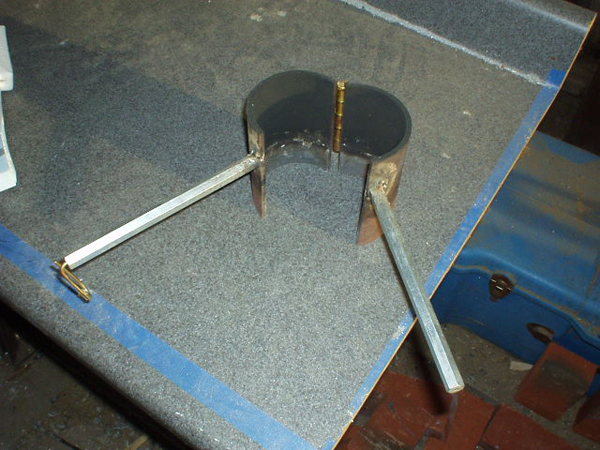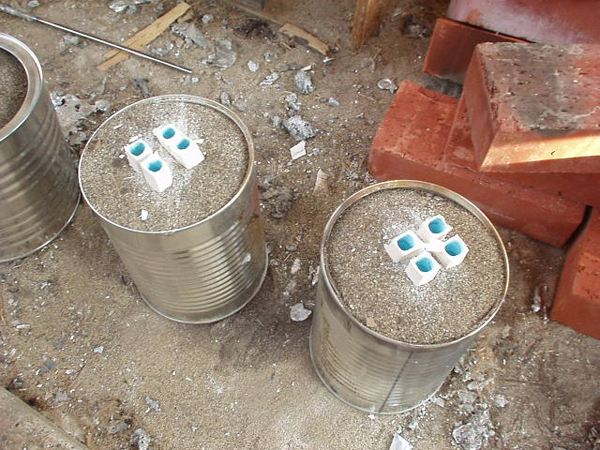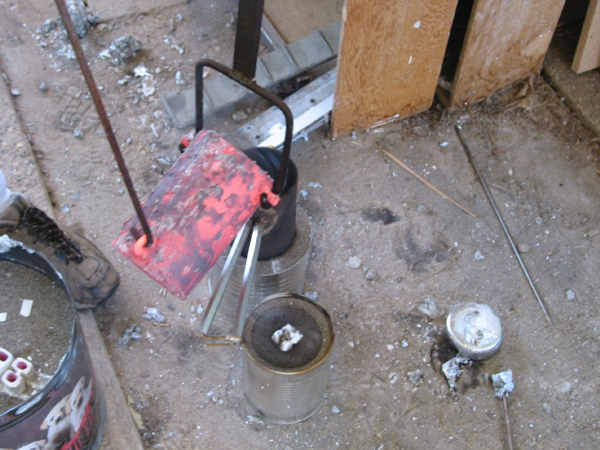Lost Foam Metal Casting
By Dave Kush
www.buildyouridea.com
Ever since I was a kid, I was tinkering around with things. Every appliance that was discarded at our house was pulled out of the trash by me and disassembled so I could figure out how it worked. I started metal casting in High School and it was my favorite class, but I was always curious about how things were built. This curiousity led me to pursue an engineering degree which I completed after much pain. I’ve built several different melting furnaces over the years and have poured all kinds of parts for the various CNC machines that I’ve built. Now, I am the owner of a small company that designs robotics and thermal test chambers for the semi conductor industry. This tutorial on casting metal parts using foam models can also be found on my site – https://buildyouridea.com/foundry/lost_foam_howto/lost_foam_howto.html OK, ready to start casting parts? Start off by making a foam model and then dipping it in drywall texture so a thin shell is formed around the part.
OK, ready to start casting parts? Start off by making a foam model and then dipping it in drywall texture so a thin shell is formed around the part.
I use Hamiltons White Line Drywall Texture mix from the depot stores. It comes in a 50lb bag and you mix it with water to form the thinnest possible consistency. When the plaster shell is dry, place the model in a can and fill with sand. Then cut the sprue down to size with a fine tooth hack saw blade.
When the plaster shell is dry, place the model in a can and fill with sand. Then cut the sprue down to size with a fine tooth hack saw blade. If you are going to be doing a lot of casting, you have to make yourself a KHPT (Kush Head Pressure Tool). Just cut a piece of 4 inch pipe lengthwise and weld a hinge and some handles to it so you can open it like a clamshell and keep it closed when it needs to be closed. In my opinion, this is the most important tool you can have. It saves tons of time and wasted castings by increasing the head pressure of the molten metal as it flows into the mold cavity.
If you are going to be doing a lot of casting, you have to make yourself a KHPT (Kush Head Pressure Tool). Just cut a piece of 4 inch pipe lengthwise and weld a hinge and some handles to it so you can open it like a clamshell and keep it closed when it needs to be closed. In my opinion, this is the most important tool you can have. It saves tons of time and wasted castings by increasing the head pressure of the molten metal as it flows into the mold cavity. See how nice it works. Put some kind of clip on the handles to keep it closed.
See how nice it works. Put some kind of clip on the handles to keep it closed.  Next, I premelt the tips of the sprue so the aluminum has a place to start into the foam. This works great with the KHPT because now the pressure has a place to force the molten metal into.
Next, I premelt the tips of the sprue so the aluminum has a place to start into the foam. This works great with the KHPT because now the pressure has a place to force the molten metal into.  Now drop the KHPT over the sprue and get ready to pour.
Now drop the KHPT over the sprue and get ready to pour.  Once your aluminum is nice and orange, pour the beautiful fluid into the KHPT making sure you over fill it by about 3 inches. This will give the mold the head pressure it needs to completely fill the cavity.
Once your aluminum is nice and orange, pour the beautiful fluid into the KHPT making sure you over fill it by about 3 inches. This will give the mold the head pressure it needs to completely fill the cavity.  Another angle showing the pour.
Another angle showing the pour. 
 Now let the aluminum cool a bit and right before it completely crystalizes, remove the KHPT from the flask.
Now let the aluminum cool a bit and right before it completely crystalizes, remove the KHPT from the flask.  The button can then be easily ejected and placed back into the crucible for remelt.
The button can then be easily ejected and placed back into the crucible for remelt.  After 5-10 minutes of cooling, dump the sand from the flask and grab the part with your pliers.
After 5-10 minutes of cooling, dump the sand from the flask and grab the part with your pliers.  Take the part to the cooling bucket and give it a dunk. Most of the plaster falls off, but you might have to remove some of the muddy plaster from the detail areas.
Take the part to the cooling bucket and give it a dunk. Most of the plaster falls off, but you might have to remove some of the muddy plaster from the detail areas.  Now repeat the process until you have one or two or a bunch of the parts that you need.
Now repeat the process until you have one or two or a bunch of the parts that you need.  Before you know it, you will have a mountain of cool home-cast parts that are ready for finish machining.
Before you know it, you will have a mountain of cool home-cast parts that are ready for finish machining.
